Lat night I watched an interesting movie on Netflix called Made You Look, about a string of art forgeries sold for unbelievable sums of money from the late 1980s till 2018.
Actually, I have only one quibble with the show, in that it should have been entitled Made You Look Foolish — because not only were art collectors taken in by the fakes, but art authenticators, catalog printers, auction houses and of course, art dealers (who are to the art business what agents and managers are to the music world — i.e. a bunch of venal rogues, thieves and manipulators).
Spoiler alert (although anyone with a brain could see this coming): when works of art sell for bajillions of dollars, the incentive for forgery increases exponentially. In the case above, all the forgeries were created by one man — some little old Chinese (quelle surprise ) artist living in Long Island NY — who had a real talent for painting in the style of most of the American abstract artists of the 20th century. He handed them over to a guy who faked the paintings’ condition (so they’d look as though they were painted in the 1950s, say, instead of 1986). Then the paintings were given to a shady art dealer with absolutely no history of art dealing (!!!!!) who then told a gullible art dealer in (where else?) Manhattan that the paintings came from an anonymous collector of unknown name and no history (!!!!) — and then the fun ensued, when the dealer purchased a painting by Jackson Pollock for, say, $950,000 (!!!!) who then turned around and sold it to some rich asshole for… $9.1 million (!!!!!!!!).
What astonished me is that this didn’t happen back in the 18th century, when nobody knew nothin’ about art authentication; no, this happened during a time when a paint’s age (and even the age of the canvas) could be determined by chemical- or spectrographic analysis. Even when this was done and the forgery exposed, nobody did anything, because there were so many reputations at stake: those of the collectors, of the art dealers, of the art critics, and so on. Nobody likes to look a fool, but untold hundreds of people were.
I’m going to make one statement here that was never mentioned in the movie. Frankly, the abstract style of art is such that I’m amazed that there haven’t been millions of forgeries, all done in middle-school art classes. Think I’m joking? Take a look:


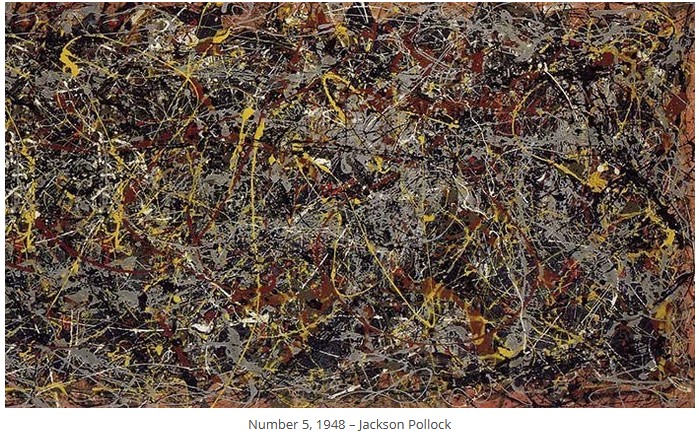
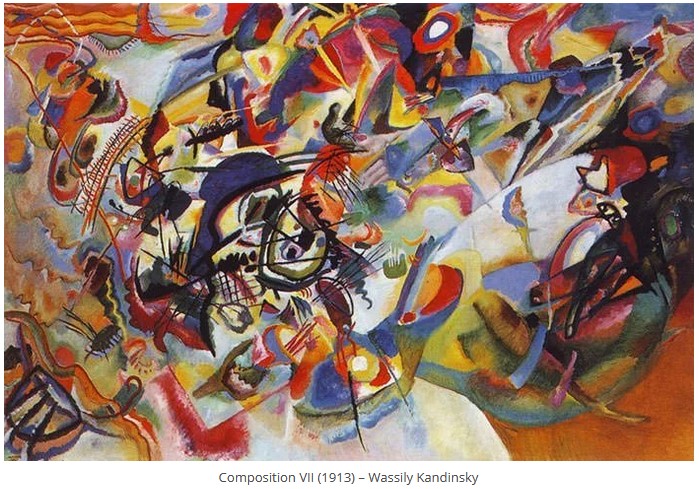
(Longtime Readers will know of my utter loathing for Pollock’s art, for all sorts of aesthetic reasons, but the others are no less awful.)
Never mind the sneers you get when you say that your 4-year-old granddaughter could paint a Rothko; maybe she can, and maybe she can’t — but a 70-year-old Chinese artist of no particular artistic merit could, and did: fooling all the above pretentious assholes into going into raptures about this kind of dreck, and paying lots of moolah for it.
By the way, I have no problem with people owning copies — even great copies — of masterpieces. I happen to have a dozen or so scattered around my house myself. Here are some, for example: Monet’s Blue House At Zaandam :
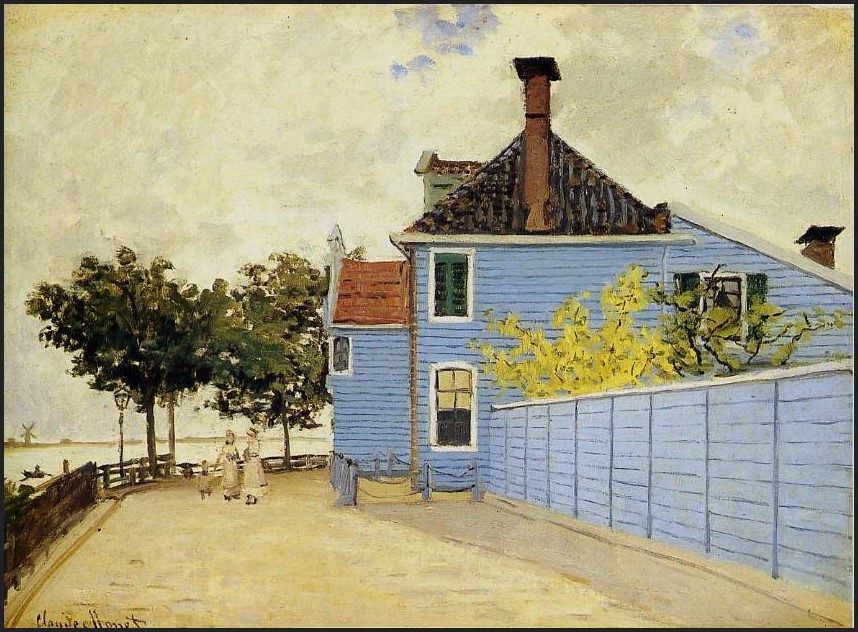
…Winslow Homer’s A Wall, Nassau :
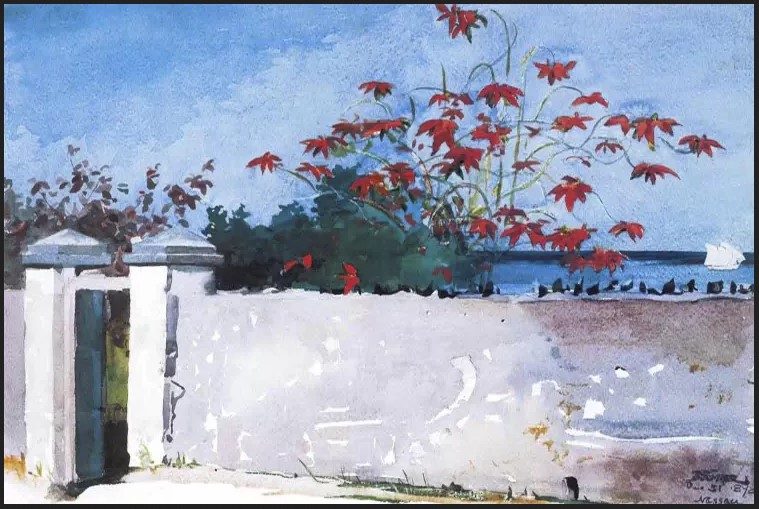
…and Childe Hassam’s Lower Fifth Avenue :
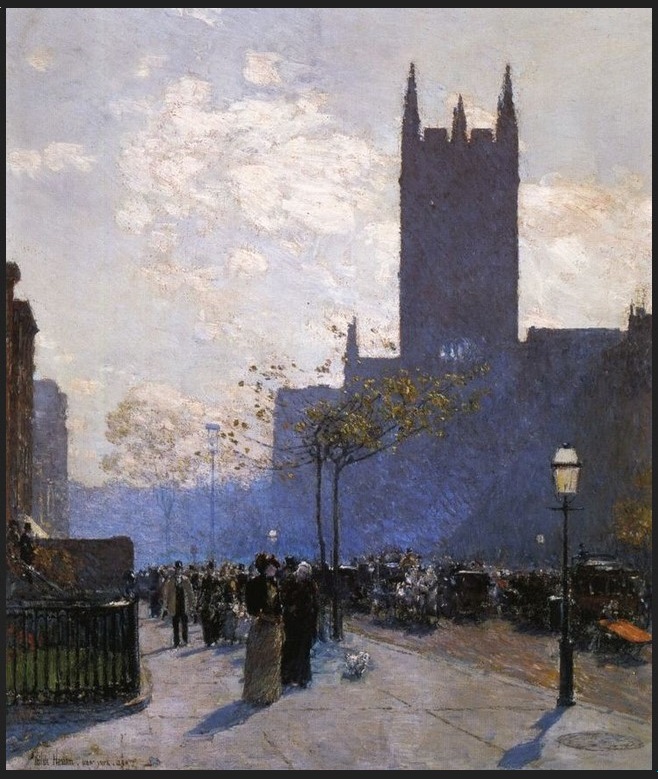
The big — giant — difference between me and those rich suckers is that I paid about $80 (eighty) each for my copies (including shipping), and I cheerfully admit that they’re not originals. (They come from iCanvas.com, by the way, and they’re created by machines using acrylic paints which look so like the original oils that it makes little difference.)
They’re also Impressionist paintings (none of that abstract splashing and daubing for me, no thank you).
I have to tell you that even if I won a huge lottery, there is no way I would ever pay millions for an original, no matter how much I may love the artist.
Especially when the “original” may turn out to be a fake, painted by a little old Chinese guy in Long Island.

I like paintings that actually look like stuff. That said, I’d much rather have a fake Monet or Van Gogh in my house (which I do) than something so ugly it could be a modern art masterpiece.
I was thinking that it would be fun to have copies of famous impressionist and Fauve paintings, and other 20th Century “Schools” of art painted by me to put on my walls, as a sort of wink-wink art forger.
Most are probably familiar with it, but an absolutely wonderful little flick, How To Steal A Million, about art forgery starring Peter O’Toole and Audrey Hepburn. It is a very clever comedy set in Paris that came out in 1966, and both stars just oozed sixties style cool and romance. O’Toole epitomized suavity and Hepburn was, as always, just plain bloody adorable. Highly recommended.
That was my first thought, too.
Nicole Bonnet: I keep telling you, Papa, when you sell a fake masterpiece, that is a crime!
Charles Bonnet: But I don’t sell them to poor people, only to millionaires.
I look on this story with more amusement than horror, but then, I’m not police or judge — or the person gulled.
I have a nice, but fake, Leroy Nieman hanging the Family room that I’ve convinced my Art snob brother – in – law that it’s the real thing. He has a whole bunch of real Keith Herrings that he keeps in a Vault but hangs fake copies in his house , ( ….. and all of which look they could have been done by the local graffiti punk kid. )
The art market is full of Greater Fools with far too much “New Money”, They all deserve to be taken too the cleaners by the gay “Art ” Dealers and various other con-artists that inhabit that sewer.
Most of our artwork is authentic but of not much value in the larger scope of things. Most are my wife’s ancestors, there are interesting stories about many of them. We do have a Gilbert Stewart of an Anglican Cleric from Rhode Island who was her multi-great grandfather, but G.S. did so many portraits that unless the individual is famous they are worth only about $5K.
Nice post and I will most certainly watch this flick over the weekend.
Paintings, wine, classic autos – these have all been subjected to forgery over the years. It’s not a stretch to see that Manhattanites seem to be the most gullible to these hucksters – my God, look at who they vote for!
The title made me expect a political post….
Classic misdirection.
I think they did that with wine too.
Fools and money are soon parted.
JQ
There is a scene in Guardians of the Galaxy (great soundtrack) where Peter Quill is bragging about his sexual conquest aboard his ship. He states, “If you had a black light it would look like a Jackson Pollock painting in here.” It’s proven to be a very accurate metaphor.
Are you saying that Jackson Pollock came in Technicolor?
It’s odd the creative juices (*all puns intended) that get stirred up by chemical dependencies. It seems the written word benefits from it in the form of books and lyrics. There’s even an element of music composition which seems to benefit (cough… Page, Clapton, Vaughan…cough). However, I think the visual art form leverages more logic and function so the multicolor splatter of Pollock doesn’t resonate with my mind’s eye. The first time I hear “Hear that lonesome whippoorwill. He sounds too blue to fly” I may have never seen it but I’ve felt the emotion. It’s an ingenious explanation of something I’ve experienced. I don’t get that from someone else having to explain the rainbow spaghetti.
I’m the type of guy who would search out a Pollock in the gallery, tell the proprietor it reminded me of the comedian Gallagher’s bit and walk away laughing.
I generally stay away from ‘art’ altogether. If I had to choose, sigh, it would probably be modern as opposed to ‘the masters’.
That being said, between the sizes of the egos involved and amounts of money be tossed about, it’s no surprise that some get greedy causing tunnel vision leading to ’embarrassment prevention’ actions. The ‘careers’ of some authenticators can and are built on a just a few items. ANY damage to the ‘reputation’ can be devastating beyond $$$.
Lastly, since I do prefer modern art, there is one verification process I have and it applies to not just modern art but ALL art. The process / method I use is simple –
If I can do it or duplicate it or copy it – it ISN’T ART !!!
Seriously, dozens of orange silks hung from ‘arches’ in Central Park, wrapping a cliff with white fabric, or jars full of urine with crucifixes – or any other object(s) inside ??
Art ?? NOT to me.
I can’t remember the “Artist”, but he got some cans, and canned his own S**t in them, put a label on them and sold them for the spot price of gold. That almost sounds like a joke, “A man takes a S**T and it’s art.* Of course, Charles Russell, the Montana Cowboy Artist once said that “An Artist is the only thing you can say you is, that nobody can say you ain’t.”
Come to think of it, he may just have relabeled some tuna cans. The other might have been too difficult to actually persuade the cannery company to do. That would make it another case of the Artist putting one over on the rubes, like Yoko Ono’s museum that impressed John Lennon so much. “A pedestal with an apple on it, with a sign, ‘Apple’.” An ordinary ladder with an arrow pointing up, labeled “Up”. Of course that seems to characterize everything Ono has ever done.
I just got done reading a pretty decent suspense novel about art forgery.
Fool Me Twice by Jeff Lindsay, the same guy who wrote the Dexter series.
It’s a worthwhile read.
We just watched that very documentary last night. The immortal words of P.T. Barnum echoed with the closing credits. Speaking of suckers, sometime earlier this century we were in Houston doing touristy things and the wife wanted to see the Rothko Chapel. I was underwhelmed, particularly so when I found out that :
https://www.tripadvisor.com/Attraction_Review-g56003-d144200-Reviews-Rothko_Chapel-Houston_Texas.html#photos;aggregationId=101&albumid=101&filter=7&ff=217898454
Those monochromatic acoustic panels behind the padre are, in fact, Gin-You-Wine Rothko paintings worth approximately a bazillion dollars each.
Suckers.
Thanks for the link to iCanvas. I went and looked and will be ordering some gifts from them soon.
There’s another documentary on Netflix called “Murder among the Mormons” or somesuch. Its very good and along the same lines.
Can’t remember who, can’t remember when….
but I recall a movie where an actor was “pulling a Pollack” by painting a huge canvass with tubes of paint attached to various points on a tricycle which he rode about.
It should bear to be pointed out that the Rothko is one that was “accidentally’ hung upside down in a gallery (who’d notice?) and nobody noticed. (!)
I’ve always thought Mondriaan’s designs would make for nice patterns for tile floors in bathrooms and hotel lobbies.
As “paintings” not so much.
Yeah. Modern “art”. https://nypost.com/2021/04/02/couple-accidentally-paints-over-500000-work-of-art/
Why didn’t widespread forgery occur in the 18th century? The obvious reason is that to convincingly forge an old master with the same materials and techniques an old master used would require the skills of an old master. A forger could presumably have done as well working in his own name.
But it’s more complex than that: The old masters usually worked on commission, making portraits of rich mens’ families or filling a particular space in a grand building. Reputation mattered more than skill to get those commissions just as it does now to sell modern art at auction – but the layman in those days could easily tell the difference between valuable art and an accident or a schoolchild’s dabbling.
Masters often just started the painting, then turned it over to apprentice or journeyman artists to complete. Artists would work many years of working for a master before the master would introduce them to customers and allow them to begin work in their own name. Thus the difference between a worthless painting by an unknown, a forgery, and a valuable old master painting was often just the authorized master’s name on the painting. The name guaranteed the commission-payer that the work would be completed to the standards of the master, no matter who actually applied the paint. Forgeries were pointless in this primary market, where the buyer paid the master directly.
If the painting went on the resale market later, what was it’s value? It was no longer custom work for a particular purpose, but it was still a pretty good wall decoration, worth a substantial fraction of the original price. Or it was elevated in price because it bore the name of a particular well-known master, who was dead and making no more – which is pretty much how modern “art” pricing has gone ever since Van Gogh died. (A good forgery of Rembrandt, for example, looks just as good on your wall – what makes a genuine Rembrandt worth more than time and materials is that other fools will pay more for it.) But the only way to know if the name was genuine is if there was a historical record of this particular painting – and even if the master’s own brush-strokes could be distinguished from his apprentices’, it did not matter for authentication because what mattered was whether the painting came from Rembrandt’s shop with his approval, not whether Rembrandt himself painted it.
And so if you have an alleged Rembrandt, you can test it for industrial-age pigments or carbon-date the canvas to prove it’s not a more recent forgery. But to prove it’s not a forgery from a contemporary of Rembrandt, you can only look for a historical record that describes a painting matching what’s in your hands, and check catalogs for other copies of the same work. The only reason I don’t think most of those Old Masters are high-quality contemporary forgeries is that it would be difficult and dangerous to sell forgeries until the master was long dead, and most forgers (like all criminals) aren’t the type to go hungry while laying away bogus treasure for their grandchildren.
Reminds me of van Gogh making several copies of his own Sunflowers painting as gifts to several people.
Did he forge his own paintings? 🙂
“How can you forge yourself?”
I suppose he could have marked them v.1, v.2, etc.?
I saw a painting in the art gallery of Ontario, the AGO, that was literally just pink dots on a canvas. Lined up like graph paper. It was called The Rose and it was hung up beside a Degas sculpture. It is so weird.